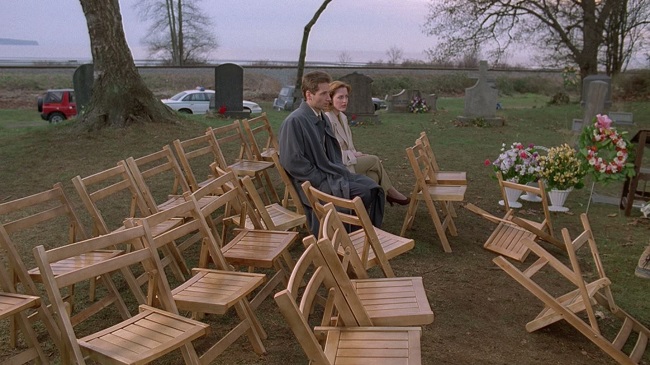
2018 marks the 25th anniversary of The X-Files, an occasion being marked by the airing of the eleventh (and possibly final) season, as well as X-Fest, a one-day festival with special guests being held in LaSalle, Illinois. The FOX TV show has left an indelible mark on the television landscape which is easy to take for granted 25 years on. Creator Chris Carter, drawing inspiration from childhood memories of the short-lived horror series Kolchak: The Night Stalker, took the “FBI investigates small town spookiness” element of Twin Peaks, applied the UFO and paranormal themes from concurrent FOX reality shows like Sightings (and older programs like In Search Of…), and added an irresistible believer vs. skeptic dynamic with the two leads, Fox Mulder (David Duchovny, who had appeared on Twin Peaks) and Dana Scully (a very fresh-faced Gillian Anderson). Scully’s expertise in forensic medicine leads to graphic autopsy scenes the likes of which were rare on television at the time; decades of forensically-oriented crime scene investigation shows would be birthed as a result. At the height of its popularity it moved from Friday nights to the more competitive Sunday night timeslot, brought in blockbuster ratings, and saw the leads appearing on the cover of Rolling Stone.
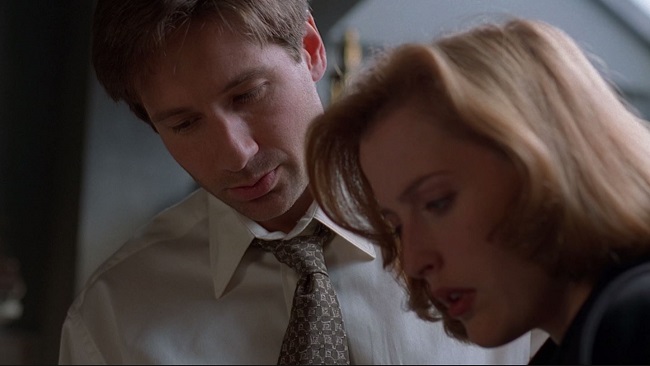
The show spawned a fun, All the President’s Men-with-aliens feature film in 1998, but – as happened to The Simpsons a few years later – remained on the air without making a permanent big-screen transition. Unlike The Simpsons, The X-Files, which relied upon a serial “mythology” plotline of alien invasion and government cover-ups, couldn’t be sustained indefinitely, and with Duchovny and Anderson anxious to move onto other things, a failed attempt to transition the show to new leads (Robert Patrick and Annabeth Gish) led to a sputtering out of the series in its 9th season, and a hastily-conceived, unsatisfying conclusion to its long-running storyline. A very belated second feature film, The X-Files: I Want to Believe, followed in 2008, but was poorly received, and the franchise went dormant until its two most recent “event” series, a (last?) reunion of Mulder and Scully, as well as hard-nosed but loyal Assistant Director Skinner (Mitch Pileggi), the nefarious Cigarette-Smoking Man (William B. Davis), and a handful of the show’s original writers, on a wave of nostalgia.
To celebrate the 25th anniversary, here are 25 essential X-Files cases (“cases,” so I can group multi-part episodes together and also include a feature film) for fans old and new.
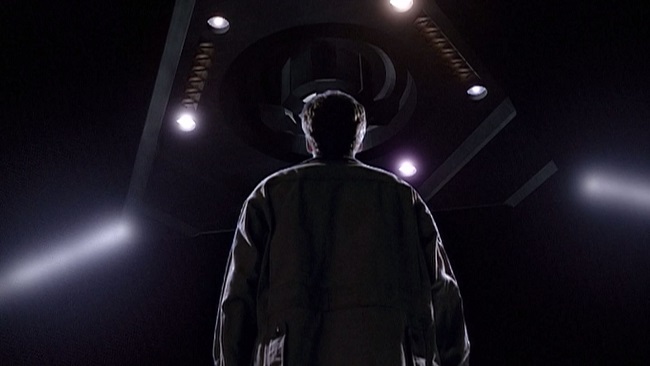
- DEEP THROAT | Season 1, Episode 2 | Written by Chris Carter | Directed by Daniel Sackheim
In the first season, the conspiracy plotline was fairly simple: aliens are among us and there’s a plot within the government to cover up their existence. “Deep Throat” represents this concept at its purest: Mulder & Scully investigate UFO sightings near a military airbase, and when Mulder climbs a fence for a closer look, he learns that he’s in way over his head. Jerry Hardin plays “Deep Throat” (after Woodward & Bernstein’s Watergate insider), who becomes an ally of Mulder’s and delivers the episode’s final chilling line: “Mr. Mulder, ‘they’ have been here for a long, long time.” It was a line that birthed an epic mythology, but it’s much more evocative when you feel like you’re just glimpsing the tip of an iceberg.
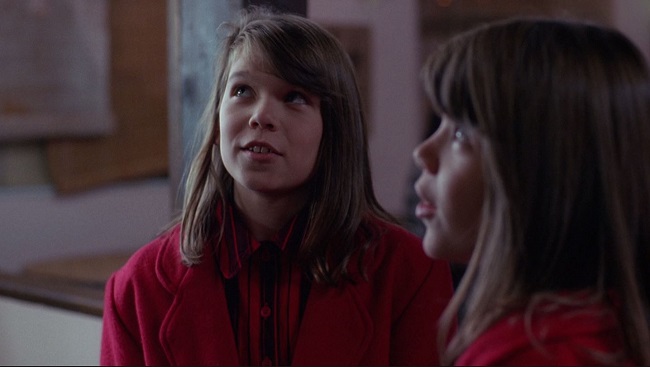
- EVE | Season 1, Episode 11 | Written by Kenneth Biller & Chris Brancato | Directed by Fred Gerber
An exsanguinated corpse leads Mulder to believe he’s onto something extraterrestrial, but several twists later and the FBI agents are investigated a cloning experiment whose subjects, the “Eves,” are both brilliant and homicidal. A chilling and witty outing which is among the best “Monster of the Week” episodes from the first season.
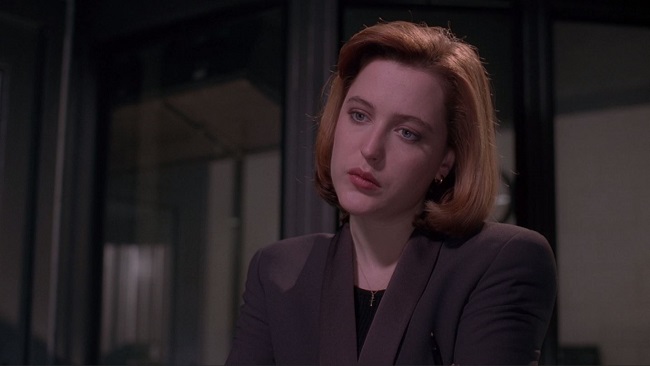
- BEYOND THE SEA | Season 1, Episode 13 | Written by Glen Morgan & James Wong | Directed by David Nutter
One of the very best hours the series ever produced, the raw and emotional “Beyond the Sea” springs from the typewriter of childhood friends Glen Morgan and James Wong, whose scripts are the highlights of the first two seasons (they returned for half of season four as well as the two most recent reunion seasons). Here Mulder is a skeptic, while Scully, still grieving the death of her father, comes to believe that a death row inmate (Brad Dourif, bringing his “A” game) has a psychic connection with a serial killer the FBI is hunting.
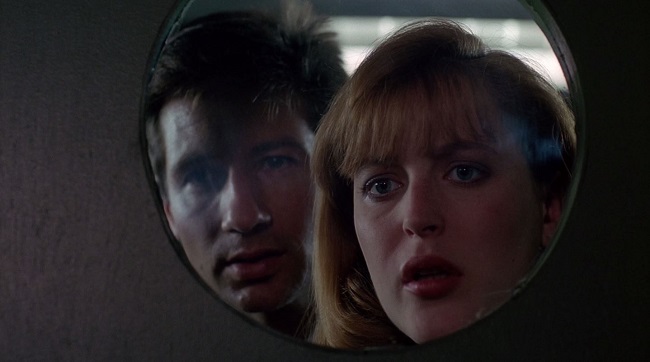
- THE HOST | Season 2, Episode 2 | Written by Chris Carter | Directed by Daniel Sackheim
After the X-Files have been (temporarily) shut down, Mulder and Scully nonetheless find the means to collaborate on the case of a humanoid fluke lurking in the sewers of New Jersey. You will want to shower immediately after watching this one.
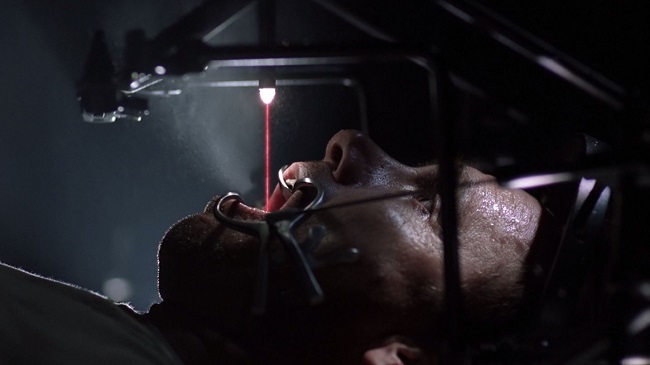
- DUANE BARRY/ASCENSION/ONE BREATH | Season 2, Episodes 4-5, 7 | Written by Chris Carter (“Duane Barry”), Michael Lange (“Ascension”), Glen Morgan & James Wong (“One Breath”) | Directed by Chris Carter (“Duane Barry”), Paul Brown (“Ascension”), and R.W. Goodwin (“One Breath”)
Anderson became pregnant between seasons 1 and 2, but Carter resisted network pressures to replace her, instead working her pregnancy – and brief absence – into the series’ mythology storyline. The decision reaped bountiful rewards. This three-parter (which was interrupted by a stand-alone Mulder episode that isn’t very good) sees Scully kidnapped by Duane Barry (Steve Railsback), an alien abductee who wants to trade her body for his at the site of his abduction. Except that aliens might not be involved in this case at all – and to find Scully, Mulder and Assistant Director Skinner must work an inside track, uncovering a mole along the way.
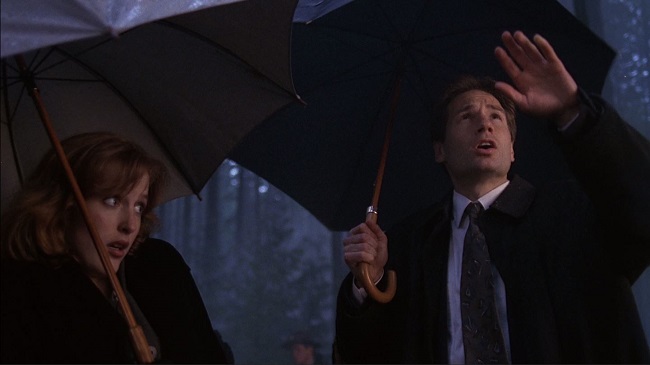
- DIE HAND DIE VERLETZT | Season 2, Episode 14 | Written by Glen Morgan & James Wong | Directed by Kim Manners
One of Morgan & Wong’s most enjoyable “Monster of the Week” episodes also has one of the best cold opens in the show’s history: a high school faculty meeting late at night touches on such topics as whether the theater group should do Grease instead of Jesus Christ Superstar, fretting over the strong language in Grease; then candles are lit, a teacher shuts a door, and Satanic chanting can be heard as the camera retreats down the hall…
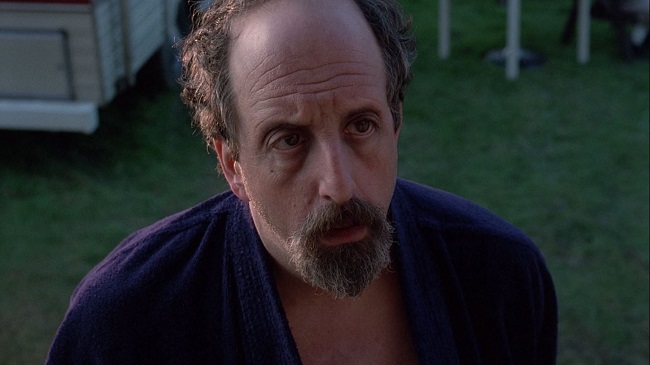
- HUMBUG | Season 2, Episode 20 | Written by Darin Morgan | Directed by Kim Manners
The first episode written by the brilliant satirist Darin Morgan (younger brother of Glen Morgan, and the man in the “Flukeman” costume in The Host), “Humbug” takes the FBI agents behind the scenes of a carnival sideshow to investigate the murder of the “Alligator Man.” Morgan constructs his hour like a walk through a funhouse; in almost every scene, there is at least one unexpected reveal or reversal of expectations. He also tackles issues such as an outsider’s isolation and loneliness – represented by the strained relationship between Vincent Schiavelli and his fetal, crawling, killer mutant brother – and the unseemly desire for social conformity – as seen in the handsome, straight-laced Mulder, whom Morgan sends up relentlessly.
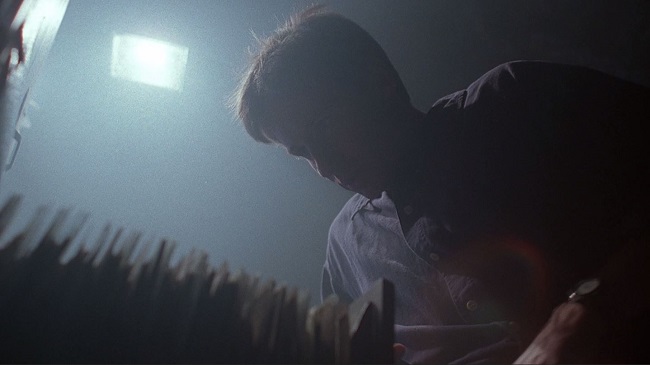
- ANASAZI/THE BLESSING WAY/PAPER CLIP | Season 2, Episode 25; Season 3, Episodes 1-2 | Written by Chris Carter (from a story by David Duchovny and Chris Carter) | Directed by R.W. Goodwin (“Anasazi” and “The Blessing Way”) and Rob Bowman (“Paper Clip”)
The first epic mythology multi-parter. Honestly, the first two parts are not the show at its best: “Anasazi” wastes a lot of time with a plot involving Mulder behaving erratically (he’s being unknowingly drugged in his apartment), and “The Blessing Way” has way too much of Carter’s indulgent overwritten monologues, as a comatose Mulder is visited by his deceased loved ones. But “Paper Clip,” the essential conclusion, is a mythology high point: thrilling and awe-inspiring, the perfect blend of 70’s paranoid political thriller and Close Encounters of the Third Kind that X-Files always aspired to be.
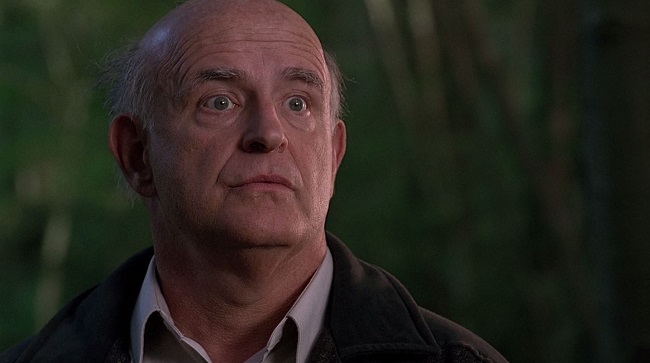
- CLYDE BRUCKMAN’S FINAL REPOSE | Season 3, Episode 4 | Written by Darin Morgan | Directed by David Nutter
Peter Boyle guest stars as Clyde Bruckman, who has the psychic ability to see how each person he meets will die. He also forms a psychic connection with a serial killer targeting fortune tellers, which leads him into the company of a too-awed Mulder and a very unimpressed Scully. What unfolds is predicted from the start (well – mostly), which allows us to understand Bruckman’s melancholy fatalism, and the ending manages an astonishing balance between wistful humor and profound tragedy. Written by Darin Morgan, this is the best episode of the entire series.
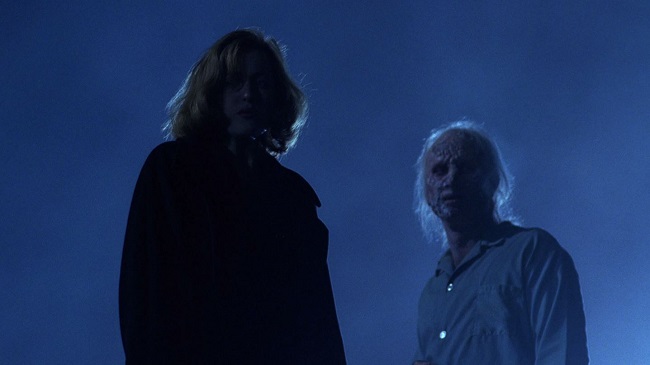
- NISEI/731 | Season 3, Episodes 9-10 | Written by Chris Carter & Howard Gordon & Frank Spotnitz (“Nisei”) and Frank Spotnitz (“731”) | Directed by David Nutter (“Nisei”) and Rob Bowman (“731”)
Until I recently rewatched this two-parter, I’d forgotten just how exciting it is. Beginning with an intentionally funny riff on the then-popular “alien autopsy” exposé which had aired on FOX, the story quickly propels the agents down a rabbit-hole involving Japanese experiments, another government cover-up, a leper’s colony, and finally a train carrying a time bomb (and just maybe a living alien).
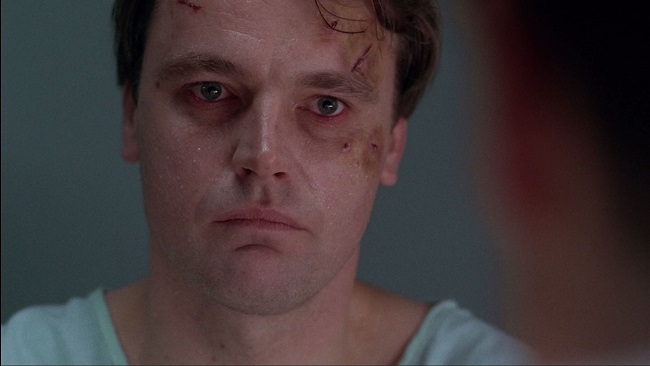
- PUSHER | Season 3, Episode 17 | Written by Vince Gilligan | Directed by Rob Bowman
Writer Vince Gilligan of Breaking Bad fame came to The X-Files late in its second season. Here, in his second script, he comes into his own. Robert Patrick Modell (Robert Wisden) has the ability to “push” his will onto others as a form of mind control; he sees himself as a samurai, and thinks he’s finally found a worthy opponent in Fox Mulder. The climax is gut-wrenchingly suspenseful.
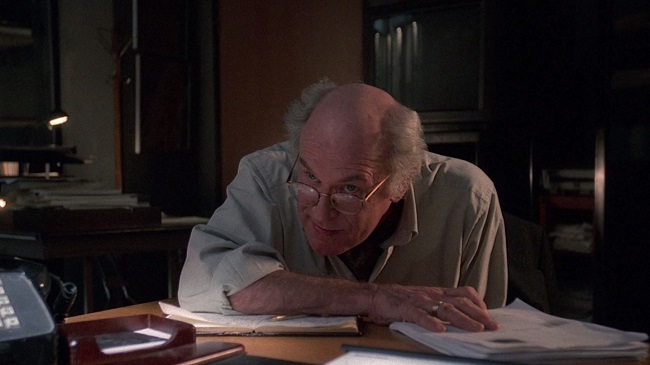
- JOSE CHUNG’S FROM OUTER SPACE | Season 3, Episode 20 | Written by Darin Morgan | Directed by Rob Bowman
Darin Morgan’s final X-Files script before the recent reunion seasons is a fascinating, endlessly rewatchable exploration of elusive truths, a Rashomon take on a worn old paperback in the paranormal section of the used book store. The author Jose Chung (Charles Nelson Reilly) interviews the survivors, witnesses and investigators of what may or may not have been an alien abduction, but the more details he receives, the less he thinks he knows. For one thing – who’s Lord Kinbote?
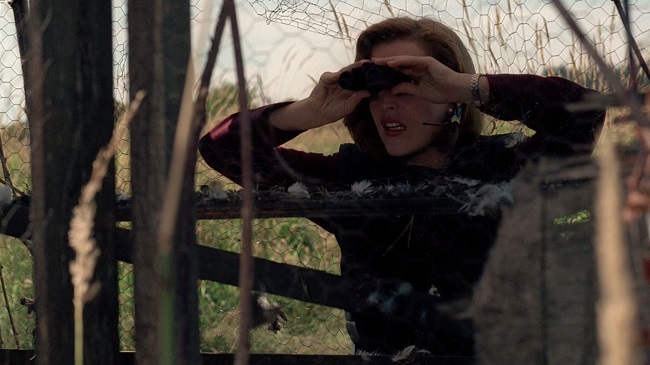
- HOME | Season 4, Episode 2 | Written by Glen Morgan & James Wong | Directed by Kim Manners
After the cancellation of Glen Morgan & James Wong’s Space: Above and Beyond, they returned (reluctantly) to The X-Files and immediately earned a new level of notoriety for this disturbing, broadcast-standards-testing hour. It has rightfully earned comparisons to The Texas Chain Saw Massacre with its portrayal of a self-isolated family, inbred to an almost supernatural extreme, who defend their property against the unwelcome intrusion of modernity – and Mulder & Scully.
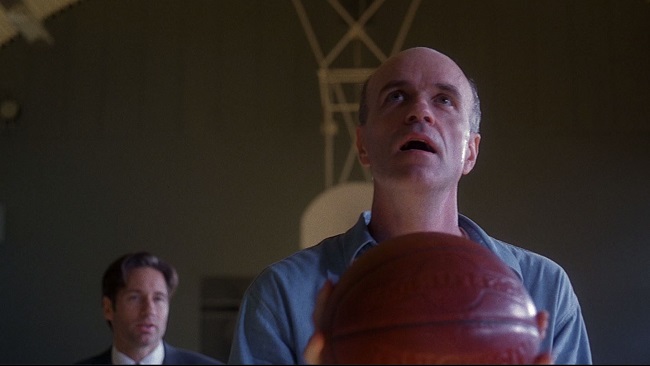
- PAPER HEARTS | Season 4, Episode 10 | Written by Vince Gilligan | Directed by Rob Bowman
Mulder’s quest for the truth has always been fundamentally driven by the childhood abduction of his sister Samantha. In “Paper Hearts,” Gilligan suggests that perhaps the abduction wasn’t extraterrestrial in origin after all. The great Tom Noonan (Manhunter) guest stars as a child molester and serial killer who claims that Samantha was one of his victims; Mulder, tormented by dreams that reveal actual clues to his crimes, begins to confront the horror that this claim might be the truth. The pivotal final minutes once again prove that Gilligan could seldom be bettered for sweat-inducing tension. Both Duchovny and Noonan are superb in this.
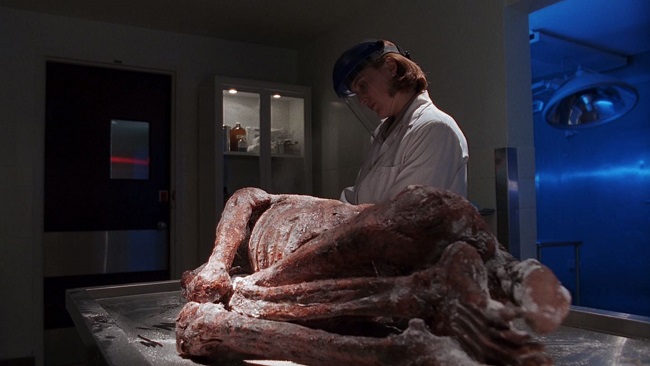
- SMALL POTATOES | Season 4, Episode 20 | Written by Vince Gilligan | Directed by Cliff Bole
Gilligan writes Darin Morgan – literally, as Morgan here plays Eddie Van Blundht, a shapeshifter who has been impregnating the local women by impersonating their husbands (he also becomes Luke Skywalker for one woman’s wish-fulfillment). Uncomfortable sexual assault theme aside, “Small Potatoes” really soars when Van Blundht ties up Mulder and takes his place, leading to a number of meta-insights into Mulder’s life, beginning with: why doesn’t his apartment have a bed? His subsequent attempt to seduce Scully is wonderfully acted by Duchovny and Anderson. Gilligan’s script acts like a tribute to Morgan’s season 3 episodes, asking a “Humbug”-worthy question of the porn-addicted, extraterrestrial-chasing, basement-office-dwelling Mulder: why does he choose to live the life of a loser?
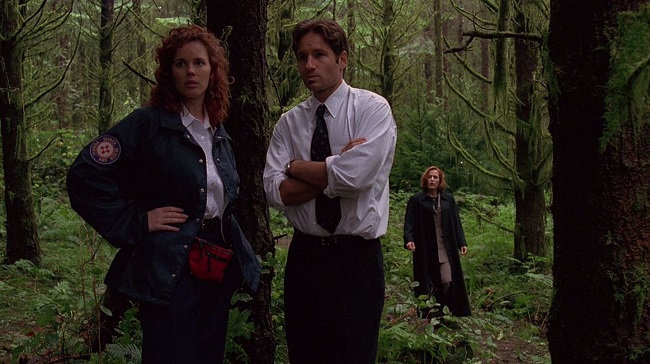
- DETOUR | Season 5, Episode 4 | Written by Frank Spotnitz | Directed by Brett Dowler
There are two installments which I consider great “hang out with Mulder and Scully” episodes. One is “Quagmire,” written by Kim Newton in Season 3 (with obvious re-writing by Darin Morgan), which is enjoyable throughout, but contains one of the most pleasurable scenes of the entire series when Mulder and Scully, escaping a sinking boat in the middle of the night, become trapped on an island in a lake stalked by a carnivorous monster. With nothing else to do, they just talk. And it’s fantastic. An echo appears in this episode, “Detour,” written by the underrated Frank Spotnitz – the agents become lost in the middle of the Florida backwoods, and Scully sings Three Dog Night’s “Joy to the World” to keep herself awake while a shivering Mulder falls asleep. It’s beautiful. But the episode is just as creepy as it is fun, as the two dodge camouflaging creatures with glowing red eyes.
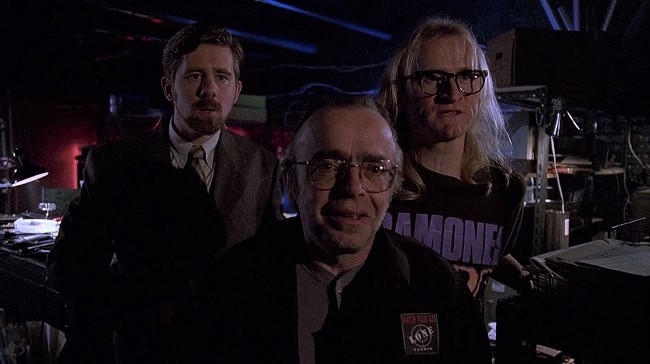
- KILL SWITCH | Season 5, Episode 11 | Written by William Gibson & Tom Maddox | Directed by Rob Bowman
By Season 5, the show was popular enough to start attracting celebrity writers. Though Stephen King was the biggest “get” this season (with his killer doll story “Chinga”), the stronger guest-written episode comes from cyberpunk authors William Gibson and Tom Maddox. “Kill Switch” is an Artificial Intelligence story that vastly improves on the first season’s take on the subject, “Ghost in the Machine,” by infusing it with more sophisticated and knowing SF ideas – along with explosions, martial arts, and virtual reality freak-outs.
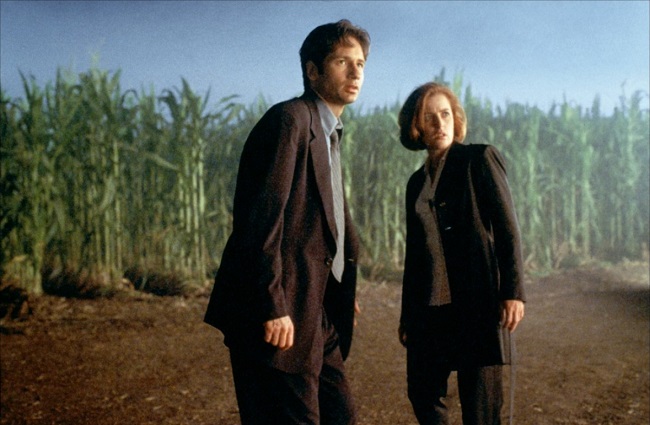
- THE X-FILES | Written by Chris Carter (from a story by Chris Carter & Frank Spotnitz) | Directed by Rob Bowman
The series becomes a big-budget summer popcorn movie. The X-Files (subtitled on the posters as Fight the Future) was intended to reach audiences beyond those who tuned in weekly – the script “introduces” us to Mulder and Scully, and following the conspiracy storyline here doesn’t necessitate having seen any of the show’s mythology episodes (though it helps, since there are connections). Nonetheless, it didn’t make as big a splash as Twentieth Century Fox hoped it would; when I saw it on opening night, the theater only saw a modest crowd. (Fast forward ten years later to the opening night of The X-Files: I Want to Believe, and my wife and I are astonished to find there’s only one other couple in the theater!) Looking back on this twenty years later, the film is a very enjoyable representation of what the show always set out to be, leading from the streets of D.C. to a glacier-set climax with killer aliens and a vast alien ship, director Rob Bowman doing a very admirable Spielberg impression all the way. This ought to have been the climax of the franchise proper. In my idealized alternate timeline, it was.
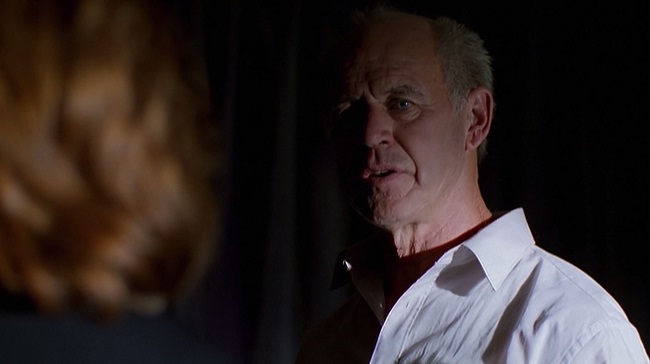
- TITHONUS | Season 6, Episode 10 | Written by Vince Gilligan | Directed by Michael Watkins
But, alas, the show went on. Season 6 picked up where the film left off, and served up a number of quality episodes; in particular, Gilligan’s voice began to dominate during the non-mythology episodes, which could only be a good thing. “Tithonus,” named after an immortal figure in Greek mythology, follows a police photographer (Geoffrey Lewis) tormented by the fact that he cannot die. Though similar to Gilligan’s fourth-season “Unruhe” with its psychic photography, the themes at work here lead to something profoundly melancholy – and magical.
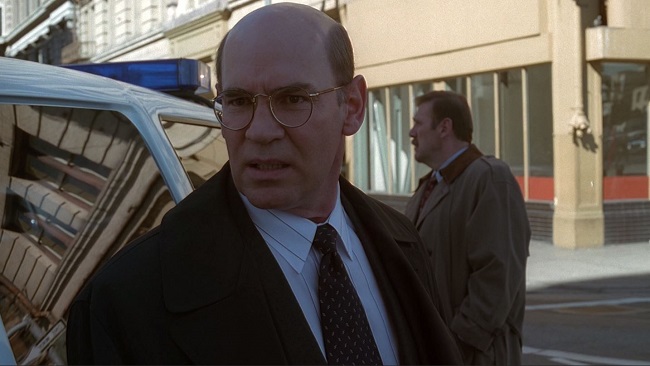
- MONDAY | Season 6, Episode 14 | Written by Vince Gilligan & John Shiban | Directed by Kim Manners
Mulder and Scully find themselves trapped in a Groundhog Day-style time loop surrounding a shootout in a bank. The only person who remains aware through each rebooted reality is Pam (Carrie Hamilton), the bank robber’s girlfriend, and she desperately tries to enlist the aid of the FBI agents. It may not be a fresh concept (and it’s still being mined for its possibilities, such as in the recent film Happy Death Day), but it works gangbusters, in part because we’re seeing Mulder and Scully from the outside, hoping that they’ll wake up to what’s happening and change the cycle of events.
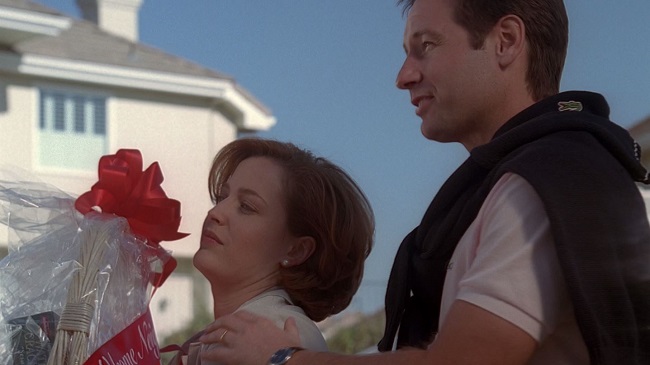
- ARCADIA | Season 6, Episode 15 | Written by Daniel Arkin | Directed by Michael Watkins
Mulder and Scully go undercover in a gated community where anyone who doesn’t keep their lawn perfectly manicured gets eaten by a garbage-monster. Writer Arkin might as well be teasing the “shippers” who would only be too happy to see Mulder and Scully as a married couple, but he also finds a rich target in those who dream of their little neighborhood being perfect – to the exclusion of anyone who doesn’t conform to their particular standards of beauty.
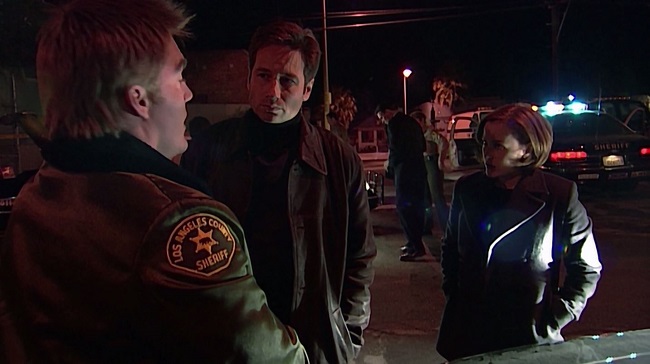
- X-COPS | Season 7, Episode 12 | Written by Vince Gilligan | Directed by Michael Watkins
By Season 7, the Mythology was repeating itself and had long since run out of steam, but the show’s format still proved durable for stand-alone tales. “X-Cops” is exactly what it says it is: a mash-up with FOX’s long-running Cops reality series, with Mulder and Scully tagging along in pursuit of a mysterious monster. Airing not long after The Blair Witch Project was released, in retrospect the episode seems to be an early example of found-footage horror, which wouldn’t really explode until Paranormal Activity came along many years later. Of course, since it’s written by Gilligan, it’s also funny as hell.
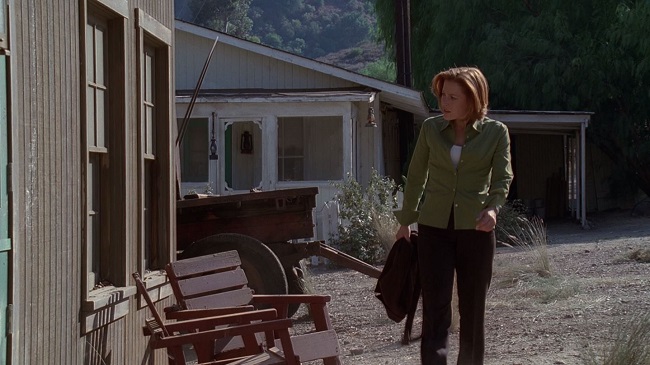
- ROADRUNNERS | Season 8, Episode 4 | Written by Vince Gilligan | Directed by Rod Hardy
Let’s face it, the show never should have made it this far – the staff had actually been planning to wrap everything up in Season 7, but FOX wanted more, and here we are. Duchovny began to back out of the series, with only minimal involvement in this season, leaving Scully to team up with a new partner, Agent Doggett (an underrated Robert Patrick) – who is more skeptical than she is, illustrating just how far her character has come. “Roadrunners” is a Season 8 highlight, an unsettling creepfest set in a small town in the Utah desert where a religious cult hides a bizarre secret. The climax is harrowing.
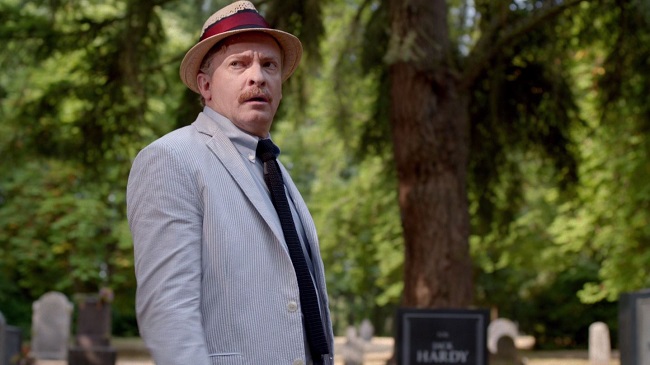
- MULDER AND SCULLY MEET THE WERE-MONSTER | Season 10, Episode 3 | Written and Directed by Darin Morgan
We’ll skip Season 9 – though it has its moments, particularly a little gem called “Scary Monsters,” and a Brady Bunch homage by Gilligan called “Sunshine Days” – and go straight to the first of the two revival seasons. Fans were ecstatic to learn that Darin Morgan would be returning to the series, alongside Glen Morgan & James Wong. His episode, predictably, is the strongest. Rhys Darby of Flight of the Conchords and What We Do in the Shadows plays a hapless human being who’s actually a lizard that’s been turned into a man after being bitten by one – in other words, it’s being human which is his “monster” form. And yet he’s able to do a reasonable job selling cell phones by speaking gobbledygook. When Mulder tells him that his story is unconvincing because it has no internal logic, he replies with exasperation: “Internal logic? It has no external logic!” – a line I now quote regularly.
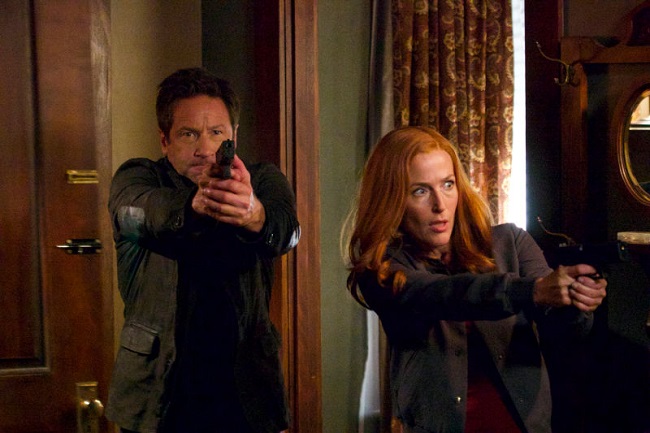
- THIS | Season 11, Episode 2 | Written and Directed by Glen Morgan
Though the eleventh season is currently airing, it’s so far been a marked improvement from the spotty Season 10. I could easily include Darin Morgan’s latest, “The Lost Art of Forehead Sweat,” which returns to Jose Chung-style slippery truths (a deliberate, wry response to the age of Trump and “fake news”), but I’d like to highlight Glen Morgan’s episode instead. Staged like one long, breathless chase into the night, “This” begins with a visitation from a dead member of the beloved Lone Gunmen, some surf music by The Ramones, and lots of gunfire, with Mulder and Scully chased out of their home, into the woods, and finally into towering anonymous skyscrapers and a room full of servers that just might contain the Singularity – the key to virtualized immortality. And yet it all feels like a dream – by design. Blink and you’ll miss clues (some a bit cryptic) that Mulder and Scully might actually be inside the simulation that they’re trying to uncover, including a reference to a character from “The Lost Art of Forehead Sweat” (which hadn’t aired yet!). And the episode ends where it began – with another chase, as though Mulder and Scully are characters doomed to forever be rebooted and sent back on another mission. Let’s hope that’s not the case, and we can finally allow this groundbreaking franchise a well-deserved rest.
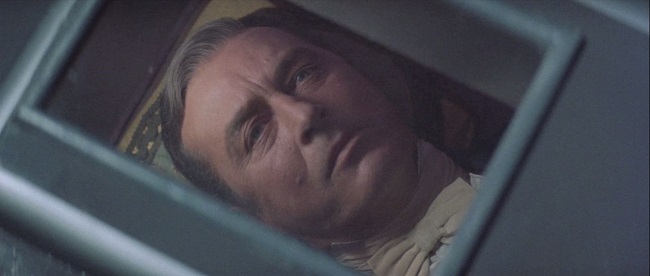 On the Kino Blu-ray of The Premature Burial (1962), there’s an entertaining interview with Joe Dante in which he recalls that Roger Corman’s Edgar Allan Poe series brought the kids out to the cinema not just because they were reliably quality horror films, but because it was Poe: that one writer you studied in school whose work seemed unwholesome for the classroom. These films profited from walking that fine line, with a literary veneer and pedigree (though sometimes just the Poe title would be used) stretched thinly over Gothic excess, Corman’s trademark psychedelic dream sequences, the occasional suggestion of necrophilia, shamelessly recycled footage, and campier touches of the macabre. The Premature Burial was the third of these films, following the very successful The Fall of the House of Usher (aka House of Usher, 1960) and The Pit and the Pendulum (1961). What makes it stand out is that Vincent Price, the series’ star, is nowhere to be found. After a dispute with American International Pictures over distribution of profits, Corman decided to go it alone with a modest budget provided by Pathé Labs. This meant that Price, under contract with AIP, was off limits, so Corman sought out another Hollywood star, the distinguished Ray Milland (Dial M for Murder, The Lost Weekend), to play the central role of Guy Carrell, whose greatest fear is being buried alive. Milland was a few years older than Price and brought a distinctly different presence: a Cary Grant-like combination of British dignity and detached charm. As Price returned again and again to his Gothic horror roles, it became easier in each film to chart all the waypoints in his descent into psychosis or sadism; with Milland, his third-act turn from haunted shell into angel of vengeance feels genuinely surprising, and he’s clearly having fun in the role. Ironically, AIP purchased Pathé just as production was getting started, and so this might have been a Price picture all along; but instead it becomes one of the more unique entries in the Poe cycle.
On the Kino Blu-ray of The Premature Burial (1962), there’s an entertaining interview with Joe Dante in which he recalls that Roger Corman’s Edgar Allan Poe series brought the kids out to the cinema not just because they were reliably quality horror films, but because it was Poe: that one writer you studied in school whose work seemed unwholesome for the classroom. These films profited from walking that fine line, with a literary veneer and pedigree (though sometimes just the Poe title would be used) stretched thinly over Gothic excess, Corman’s trademark psychedelic dream sequences, the occasional suggestion of necrophilia, shamelessly recycled footage, and campier touches of the macabre. The Premature Burial was the third of these films, following the very successful The Fall of the House of Usher (aka House of Usher, 1960) and The Pit and the Pendulum (1961). What makes it stand out is that Vincent Price, the series’ star, is nowhere to be found. After a dispute with American International Pictures over distribution of profits, Corman decided to go it alone with a modest budget provided by Pathé Labs. This meant that Price, under contract with AIP, was off limits, so Corman sought out another Hollywood star, the distinguished Ray Milland (Dial M for Murder, The Lost Weekend), to play the central role of Guy Carrell, whose greatest fear is being buried alive. Milland was a few years older than Price and brought a distinctly different presence: a Cary Grant-like combination of British dignity and detached charm. As Price returned again and again to his Gothic horror roles, it became easier in each film to chart all the waypoints in his descent into psychosis or sadism; with Milland, his third-act turn from haunted shell into angel of vengeance feels genuinely surprising, and he’s clearly having fun in the role. Ironically, AIP purchased Pathé just as production was getting started, and so this might have been a Price picture all along; but instead it becomes one of the more unique entries in the Poe cycle.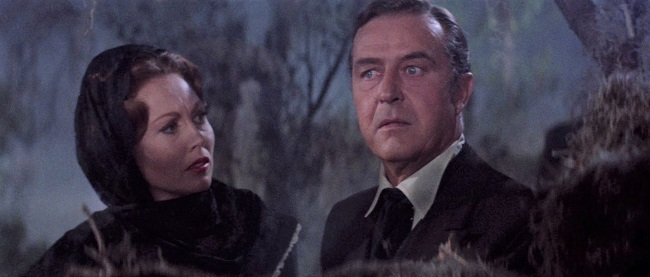
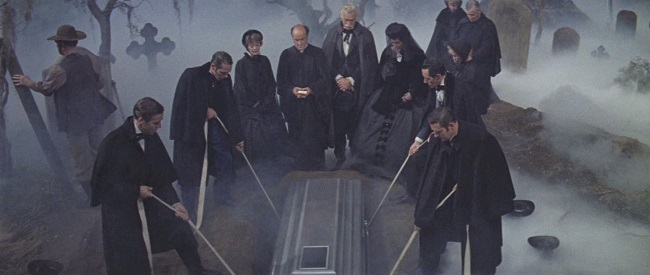
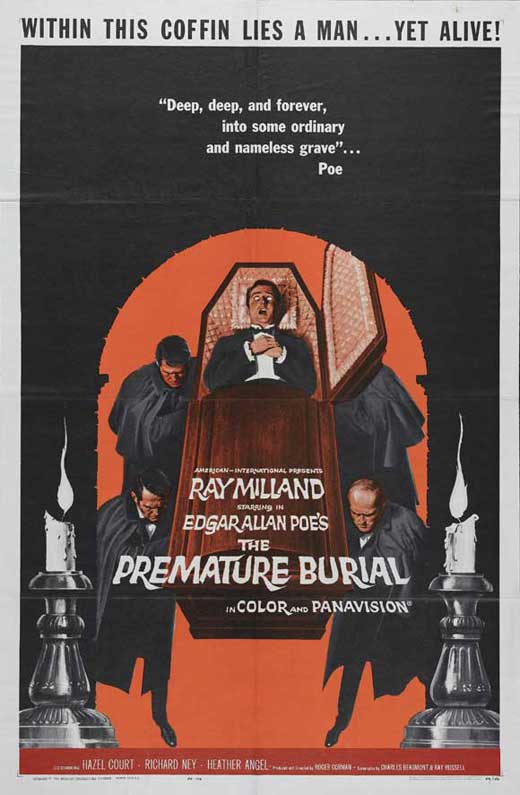



























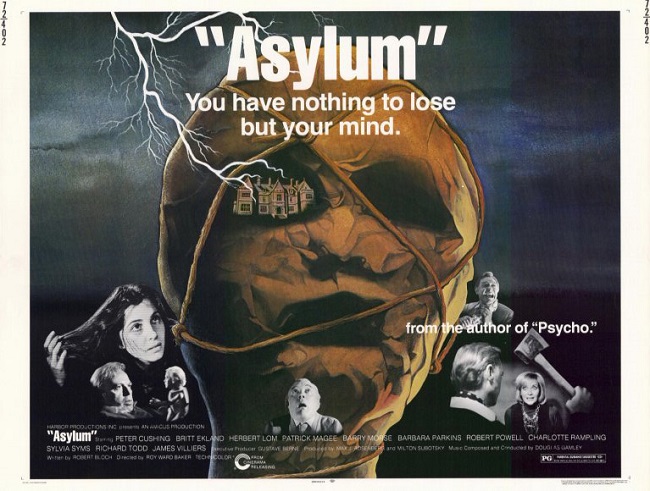
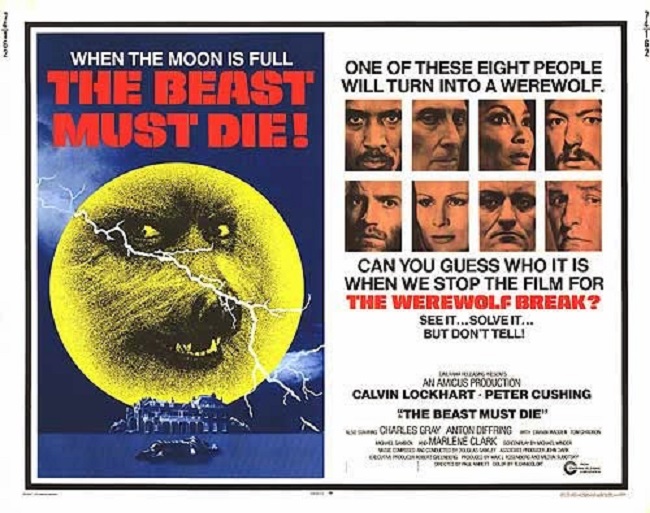 I split the box set over two nights, first watching Asylum and The Beast Must Die as a double feature, which was a good decision since the latter is truly a B-movie and should be watched as late into the night as possible. Asylum is regarded as one of Amicus’s best anthologies (they made a lot of them – see my next two reviews), and it’s easy to see why, since the stories here – by Amicus’s go-to horror writer, Robert Bloch – are all decent, and the linking material cleverly becomes the closing tale (“Mannikins of Horror,” with A Clockwork Orange’s Patrick Magee and Phantom of the Opera’s Herbert Lom). “Lucy Comes to Stay” is slight but benefits from performances by Britt Ekland (The Wicker Man) and Charlotte Rampling (right before The Night Porter). Best of the segments is the Peter Cushing one, unsurprisingly; he orders a suit tailor-made to occult specifications. The Beast Must Die has a William Castle gimmick that was ridiculously outdated by 1974: it’s a whodunit which stops the action pre-climax for a “Werewolf Break” to allow the audience a full minute to guess who the killer werewolf might be. (For the record, I guessed correctly, though there was a twist I didn’t see coming.) This is a wonderfully ridiculous “thriller” with some recognizable faces, including Cushing again and Charles Gray (
I split the box set over two nights, first watching Asylum and The Beast Must Die as a double feature, which was a good decision since the latter is truly a B-movie and should be watched as late into the night as possible. Asylum is regarded as one of Amicus’s best anthologies (they made a lot of them – see my next two reviews), and it’s easy to see why, since the stories here – by Amicus’s go-to horror writer, Robert Bloch – are all decent, and the linking material cleverly becomes the closing tale (“Mannikins of Horror,” with A Clockwork Orange’s Patrick Magee and Phantom of the Opera’s Herbert Lom). “Lucy Comes to Stay” is slight but benefits from performances by Britt Ekland (The Wicker Man) and Charlotte Rampling (right before The Night Porter). Best of the segments is the Peter Cushing one, unsurprisingly; he orders a suit tailor-made to occult specifications. The Beast Must Die has a William Castle gimmick that was ridiculously outdated by 1974: it’s a whodunit which stops the action pre-climax for a “Werewolf Break” to allow the audience a full minute to guess who the killer werewolf might be. (For the record, I guessed correctly, though there was a twist I didn’t see coming.) This is a wonderfully ridiculous “thriller” with some recognizable faces, including Cushing again and Charles Gray (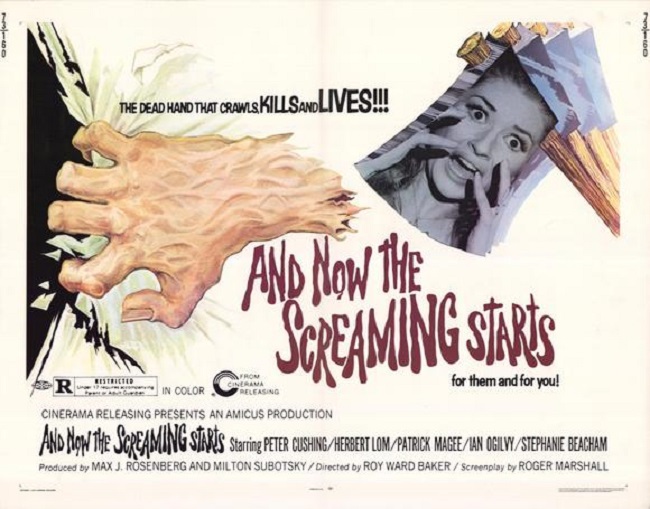
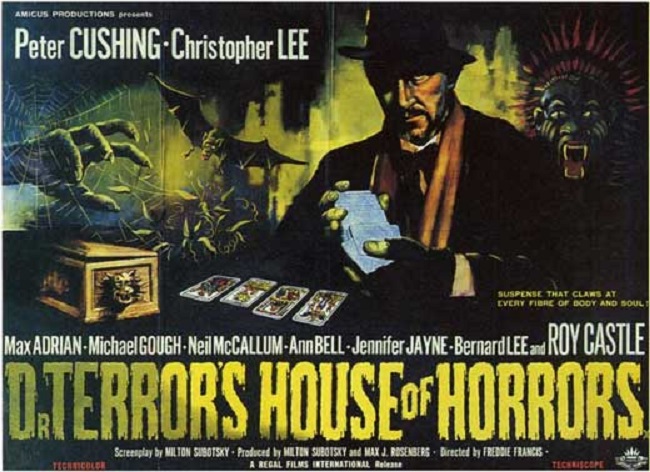
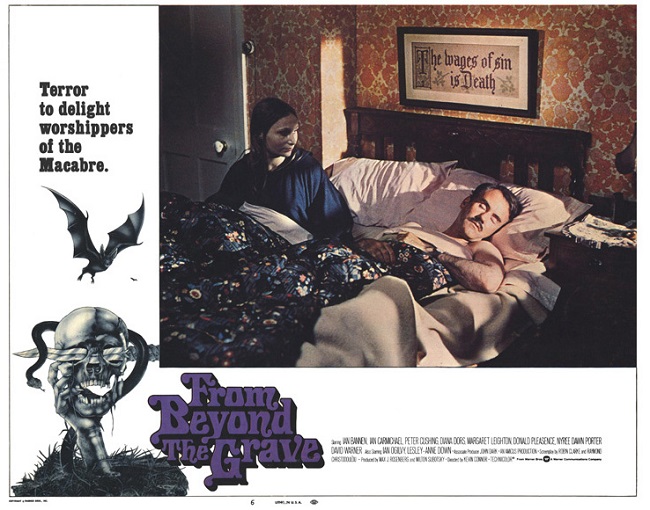
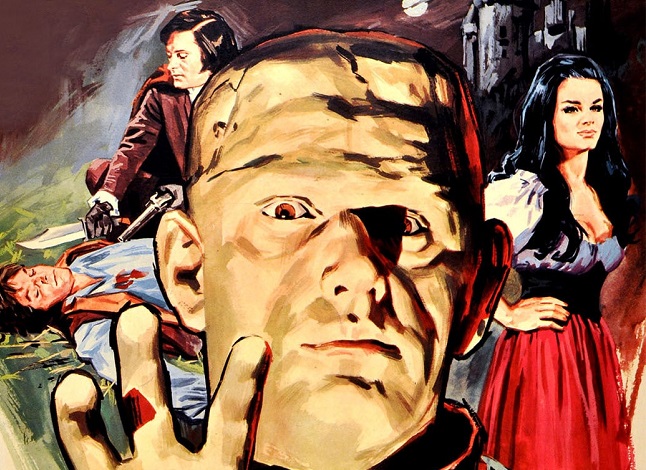 Horror of Frankenstein (1970)
Horror of Frankenstein (1970)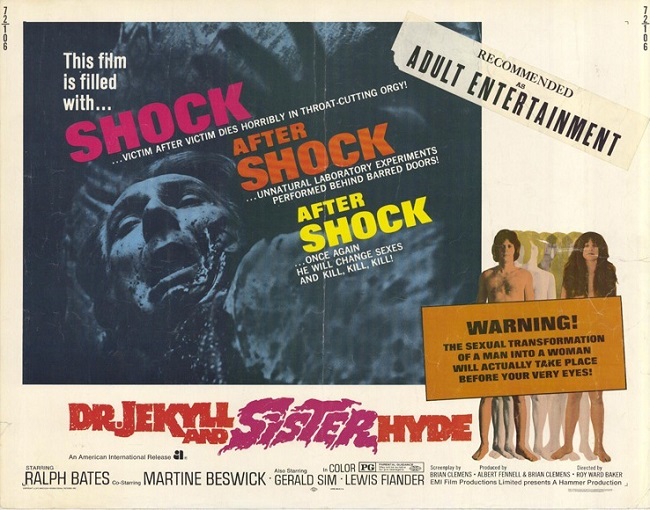 Dr. Jekyll and Sister Hyde (1971)
Dr. Jekyll and Sister Hyde (1971)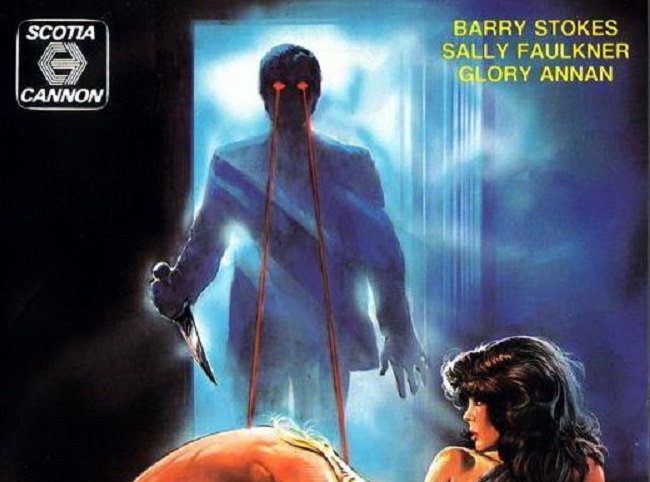 Prey (1977)
Prey (1977)








